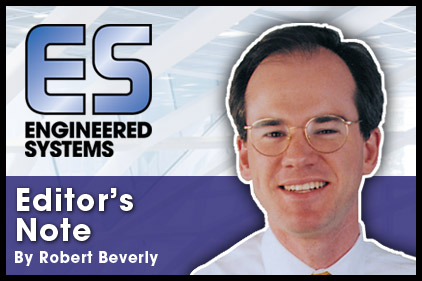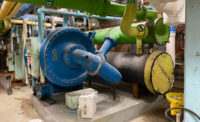The day (or the thing that needs fixing, or the deadline, or the design) right in front of us is often more than sufficient for taking all our attention. Doesn’t leave much time for adjusting our sight line and taking a peek further down the road than we absolutely have to. That’s one reason I always enjoy updates on what new research is pursuing.
This time around at ASHRAE, research takes different approaches in trying to pull refrigerants and IAQ further down the evolutionary path. I didn’t have enough room last month to give it the space it deserved, so here’s an extended explanatory excerpt.
ASHRAE has awarded projects at Purdue University and Oklahoma State University with its newly created research grant, which provides funding for research having the potential to significantly advance the state-of-the-art in HVAC&R.
The ASHRAE Innovative Research Grant carries a base grant of $50,000 per year for two years, with an additional $25,000 available in the third year if matched by an industrial contributor.
“Our goal with the new grant is to encourage more out-of-the-box research to complement the research proposed and guided now by ASHRAE technical committees,” T. Agami Reddi, chair of ASHRAE’s Research Administration Committee, said. “We see it as providing seed money to encourage ‘blue sky research’ that may otherwise not be funded initially through other means.”
Recipients are Lorenzo Cremaschi, Ph.D., associate professor, School of Mechanical and Aerospace Engineering, Oklahoma State University; and William Hutzel, P.E., professor, Mechanical Engineering Technology Department, Purdue University.
Cremaschi’s project, “Smart Nanolubricants for HVAC&R Systems,” focuses on nanoparticles with purposely different conductivity, size, and shape. The research will advance the understanding of the interactions of the nanoparticles with refrigerant and lubricant flow boiling at the nano- and micro-scale levels, for which no previous studies exist.
“This research opens a new frontier for nanotechnology applied to air conditioning and refrigeration systems,” he said. “Driven by higher energy efficiency targets, there is critical need of major heat transfer enhancements in heat exchangers and nanolubricants, which are defined as nanoparticles suspended in high-viscosity suspensions, and which have the potential to address such need in a cost-neutral manner for both new and retrofitting residential air conditioning applications.”
Hutzel’s project, “Biowall Research,” will evaluate a biowall, which integrates plants with the return air of a residential or light com-mercial HVAC system to remove CO2 and volatile organic compounds. Americans spend 90-95% of their time indoors where levels of pollutants may run 2 to 5 times, and occasionally more than 100 times, higher than outdoor levels, according to Hutzel. Many of these pollutants cause adverse health reactions in building occupants, which can contribute to lower worker productivity and increased sick leave.
“This research will demonstrate and evaluate a novel biofiltration system that improves indoor air quality and has the potential for decreasing overall energy use,” he said.
I especially like the extra incentive to support this sort of “blue sky” research. We’re better off if someone can afford the time and attention to give to tomorrow and its possibilities rather than today and its demands.
YOU CAN TAKE IT WITH YOU
Speaking of an emerging industry, Jeff Seewald turns on his tablet this month and begins his series on how engineers can use them in their work. Seewald begins to investigate how this increasingly popular blend of power and portability can apply to typical project tasks, so check out this first installment. A few more will follow.
ES Webinars
Register for this free event or watch other webinars available in our archive anytime at http://webinars.esmagazine.com
- Chilled Beams
- Heat Recovery
- VRF
- Boiler Rules
- Heat Pipe Systems
- Firetube Boilers
- Enthalpy Wheels
October 15-18
When Designing An Essential Power System For Health Care, What Is More Important: Patient Safety Or Financial Outcomes?
Presented by Randy Ehret, Environmental Systems Design
Sponsored by Kohler
Industry Events
October 15-18
IAQ 2013 – Environmental Health in Low-Rise Buildings
ASHRAE
Vancouver, BC, Canada.
For info, www.ashrae.org.







